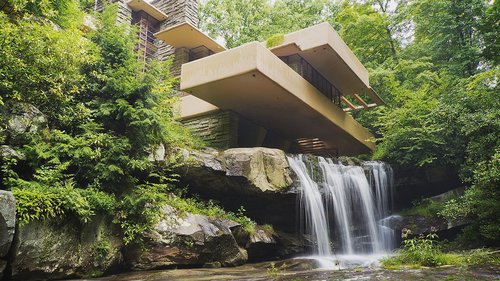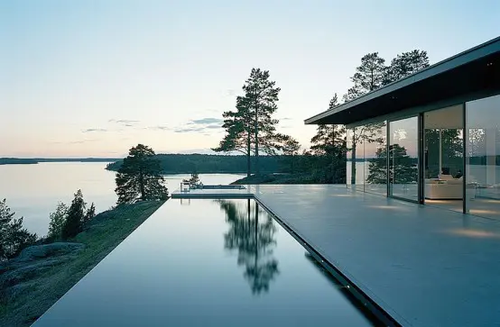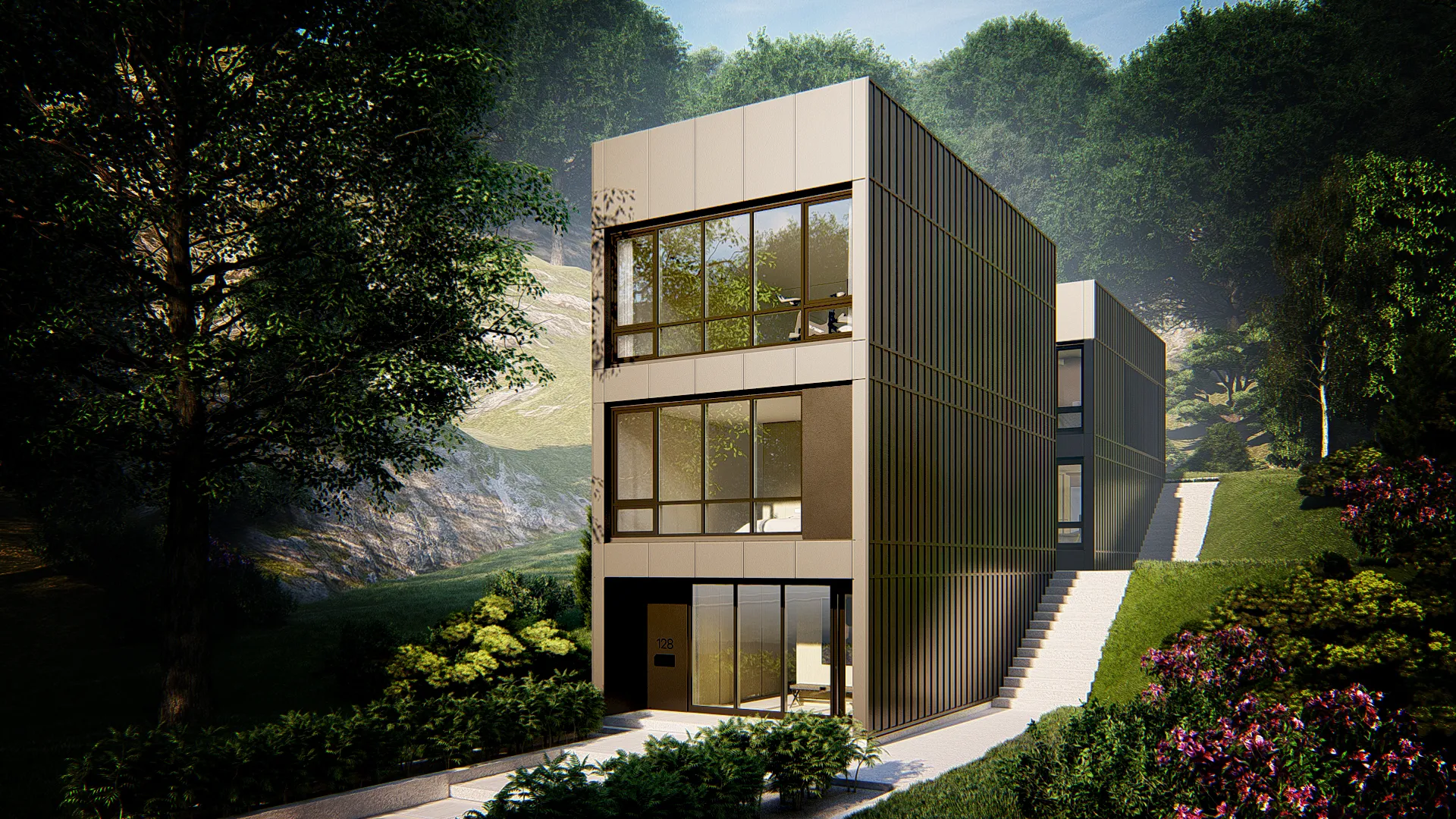Designing a custom home for sloping land requires different considerations to maximize your property compared to building a home on a flat lot.
On the one hand, a sloping property offers many opportunities to maximize space, views, and access to daylight. On the other hand, a plan that doesn’t take into consideration the unique features of sloping land can (at best) prevent you from maximizing property value and (at worst) lead to a home that is not structurally sound or safe.
Geotechnical & Structural Considerations
We love great designing modern homes. But, before we (or any architect) can kick-off the design process, it’s important to ensure that any geophysical restrictions on your property are understood and either designed around, or “fixed” with the help of an engineer.
With a flat lot, there is usually little to no risk of the land supporting your home failing, and you shouldn’t need to design your home to act as a retaining wall or mechanism to hold back soil. With a sloped lot, and in particular a steeply sloped lot, you will need to account for these types of restrictions in your design (and your budget).
Before purchasing sloping land to build your home (or before beginning design if you already own land) you should obtain a geotechnical report for the property. A geotechnical report can be solicited through the services of a registered geotechnical engineer.
Your geotechnical report will provide information on your property’s soil type and structural properties, presence of contaminants, ground water conditions, soil compaction requirements, weeping tile requirements, seismic design information, flood zone considerations, and other design recommendations related to building in on your property. This geotechnical report will also help you understand which areas on your site are safe to build, which areas need work to make them safe, and which areas cannot be built on. Above all, this report will outline various foundation design recommendations for your new home on your sloping property.
Most people who are building a home for the first time have never heard of a geotechnical engineer. Even those who are familiar with the services of a geotechnical engineer typically engage these professionals early in the project, and may not take full advantage of their knowledge and services. A geotechnical engineer can be a valuable asset in helping understand your foundation, retaining wall, and slope stability design options for a sloping property; They can also help you better understand the costs and benefits associated with these options early in the project, so that you make good decisions from the onset. Your builder should coordinate site reviews by the geotechnical engineer at key points in the construction process to confirm that the work performed is compliant with the geotechnical report ensuring that your home is built on a stable foundation.
For houses on extremely sloped sites, it is common (and usually required) to also engage the services of a structural engineer. Your structural engineer will utilize the information provided in the geotechnical report, and will typically work closely with the geotechnical engineer, to design the best suited foundation systems for your sloping property.
Pro-Tip: Your city or county may require special permits to construct a home on a sloped or steeply sloped lot. Be sure to understand any special requirements before purchasing your property.

Take in the View
A custom home built on sloping land must take advantage of the views afforded from the lot to maximize property value and the enjoyment that beautiful vistas can bring.
Rather than choosing a stock plan, work with your architect or designer and builder to position your home on your sloping land to gain full benefit from the different types of views available from your property.
Before you begin working with a designer, try to spend meaningful time on the property. Walk the property and spend time there during different times of day (or even different seasons, if you have the time). This will help you better see and understand the potential of different parts of your property.
Pro-Tip: Pack a picnic and spent several hours at your property so that you have time to explore and discover your favourite views. You can even bring a step ladder with you to help you envision the views you could experience from your second floor (or main floor if you are will have a walk-out basement). Plan for more than one visit and if at possible invite your architect or designer and custom home builder to join you!

Floor Plan Considerations
Once you’ve spent time on your sloping property and have worked with your designer, geotechnical engineer, and builder to establish the building site for your custom home design, your architect or designer can begin designing planning your home.
We always advise clients to provide us (as custom home designers) with a functional program to ensure that our client’s priorities and needs are clear. When designing a custom home on a sloping lot, you’ll want to ensure that this program identifies how and where you like to spend your time each day. Don’t be shy to be specific about how you want to enjoy the views from your property.
For example, where do you complete your morning routine? Be sure that space will enjoy morning sun or the best morning views. Does your home have a fantastic sunset view? If so, you will want to design your floor plan differently if you enjoy hosting sunset dinner parties than if you like to watch the sunset in peaceful self-reflection.
Of course, once of the major advantages of designing your home on sloping land is the opportunity to design your home with a walk-out basement. A walk-out basement allows you to enjoy ample natural light and meaningful connection to the outdoors on all of your floors. Be sure that your custom home design for sloping property includes a walk-out basement!
Prioritizing Your Budget
If building your custom home for sloping land will require geotechnical work, such as retaining walls, specialized foundations, berms, slope stability measures, special drainage, or other engineered materials; Ensure that your budget provides for these essential works to be designed and installed.
Once the costs associated with the structural integrity needs of a home designed for sloping land are addressed, be sure to prioritize purchasing the largest and best-quality windows your budget can afford. Large windows and glass doors should be used to give you access to the best views from your lot, to provide meaningful connection to outdoor spaces, and to allow natural light to penetrate deep into your floor plan.
Don’t forget to budget for landscaping for your sloping property. This may include hard-scaping such as retaining walls, stairs, planters and curbs. It will also including soft-scaping, such as trees, shrubs, grasses and other plants. Work with a landscape architect or professional landscaper to plan your yard and garden to look beautiful now and when your vegetation is fully grown.
Pro-Tip: Trees, grasses, and shrubs can be used as a material to help you retain soil and ground on sloping land. Work with a professional landscaper or landscape architect to help you understand what types of vegetation can be planted to act as a geotechnical material in your geographical area.
Building a Custom Home On Sloping Land
Building a custom home on sloping land might require a bit more planning and design work compared to building on a standard flat lot, but we think that the opportunities for privacy, amazing views, unique relationships to the site, and access to natural light make the extra work and cost very worthwhile.
Are you planning to build a custom home on sloping land? We can help with that!
Many of the homes in our collection of home plans can be customized to suit a sloping property, and our architects also work with clients and their custom home builders to design modern homes for sloping land.
Drop us a line – we’d love to chat.
LET US KNOW WHAT YOU THINK
Love great design?
Want to offer some feedback?
Have an idea for a blog?
Interested in one of our plans, but need more information?
We’d love to hear from you!
DROP US A NOTE
We’re here to help


